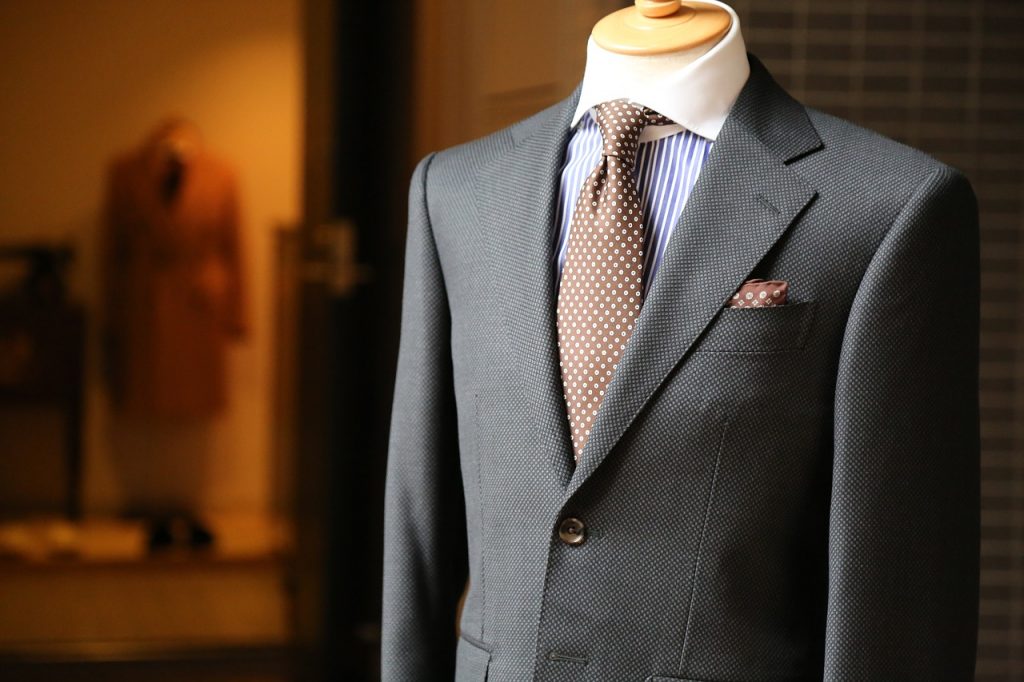Story of an English Word: Bespoke Posted by Gary Locke on Mar 22, 2018 in English Language, English Vocabulary
Vocabulary is fluid. Words come and go like the tide, or they may mix with others to become something else. Some vanish, as if they vaporized into the air. Some words change their spelling over time, losing a vowel like a cup that spilled but righted itself. And some words reappear after decades of disuse, as though they had been underground and just now resurfaced.
A Little History
An excellent example of the latter type of word is bespoke. We know that it entered the English language in the 15th century as a verb, the past tense and past participle of bespeak, originating in Old English as besprecan, and evolving out of Dutch and Germanic origin meaning to ask for in advance or to make prior arrangement. It was also used to reference marriage, indicating that someone was spoken for. However, its use as a verb gradually became archaic and was relegated to secondary status behind its use as an adjective.
Take everything from the previous paragraph, whir it in a blender, and you end up with the adjective form of bespoke. The High Dutch period, when Amsterdam was the fashion capital of the world, inspired London tailors to ply their craft specifically for the British gentry. Tailor turned property developer Robert Baker founded Pickadilly Hall on the site of today’s Great Windmill Street in Soho. This area now runs adjacent to London’s famed Saville Row of tailor shops. The hall took its name from pickadils or pickadillos: ruffled collars that were fashionable in the Jacobean era and were in high demand for weddings. Baker made them for the wedding of King James I. In time, any order for specially tailored clothes, especially for a wedding, was bespoke – a bespoke suit, for example. Someone who works on Saville Row specializing in custom-made apparel is a bespoke tailor.
We now have a word which is an archaic verb and a very specific adjective in the tailoring world. Nevertheless, bespoke assumed a life of its own. Gradually, anything which was custom made-to-order was said to be bespoke. You could have a bespoke dining table or a bespoke sewing basket. In Britain and the United States, however, such fineries were exclusive to the upper classes. With the advent of mills and factories in the 19th century, mass-produced goods became more readily available. Items which were bespoke became rare commodities.
Back from the Dead
By the early part of the 20th century, the adjective all but faded from widespread use. Only Saville Row tailors, and others like them, were consistently using the word. For them, the word now became something beyond custom-made, attaching a greater luster to its traditional meaning. Then, as if someone had discovered a goldmine, the word began to re-emerge in the 21st century.
Celebrities, hedge fund manipulators, and hipsters all latched onto the word as a branding message. It is a buzzword, a word which is in vogue and intended to impress others. Its history and very sound add to the adjective’s allure. Due to the word’s very antiquated nature, something which is bespoke must be special because it sounds special. Even Saville Row caught on. In 2004 the businesses formed The Saville Row Bespoke Association, to unite “…the founding fathers of the Row with the New Establishment tailors to protect and develop a craft practised in this elite quarter of Mayfair for over two centuries.” They recognized a marketing opportunity and capitalized on it.
Today, only the very best of anything is bespoke: cocktails, jewelry, even pets. Although, if you ask me, that dilutes the meaning of the word.

Build vocabulary, practice pronunciation, and more with Transparent Language Online. Available anytime, anywhere, on any device.




